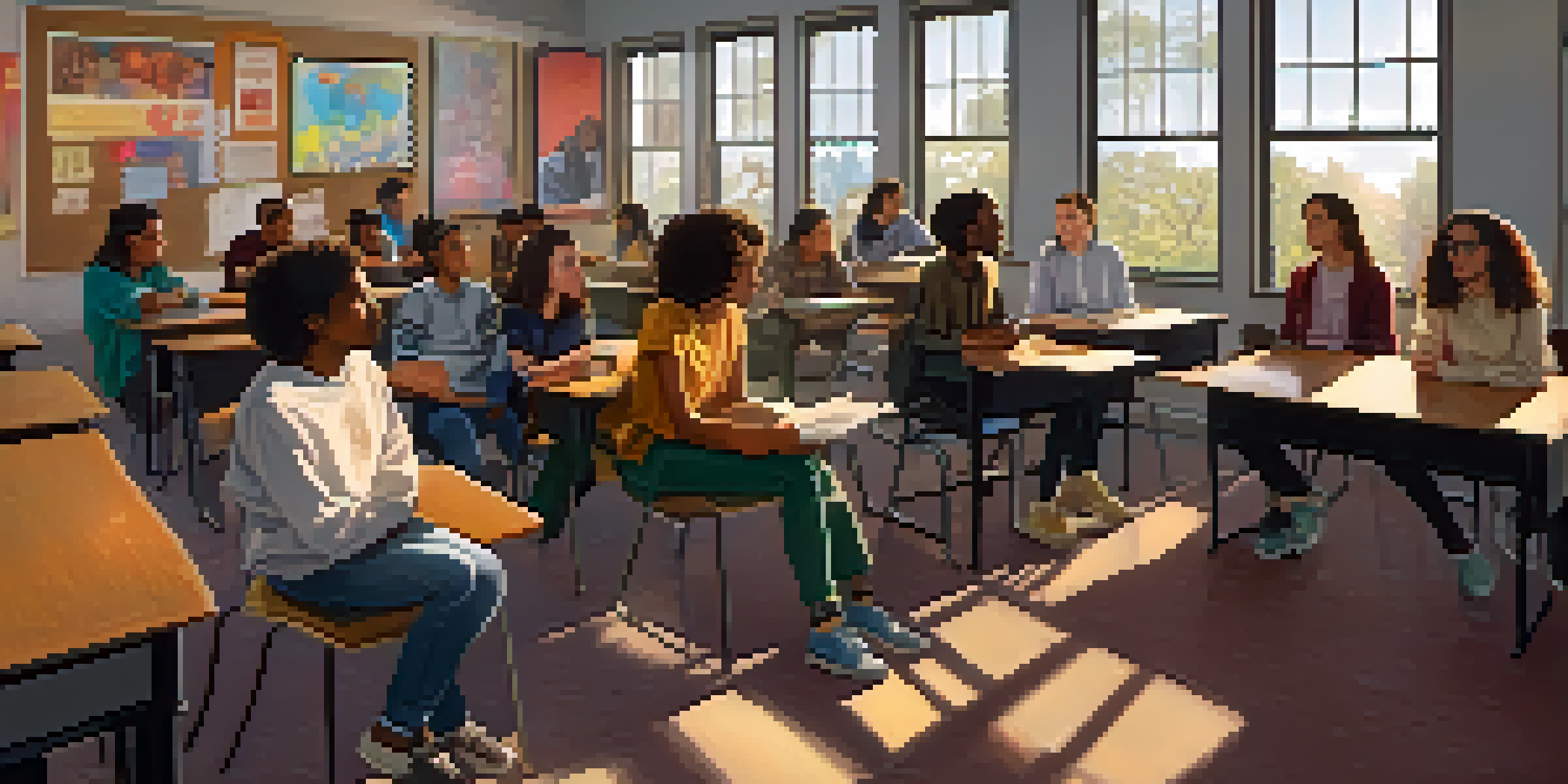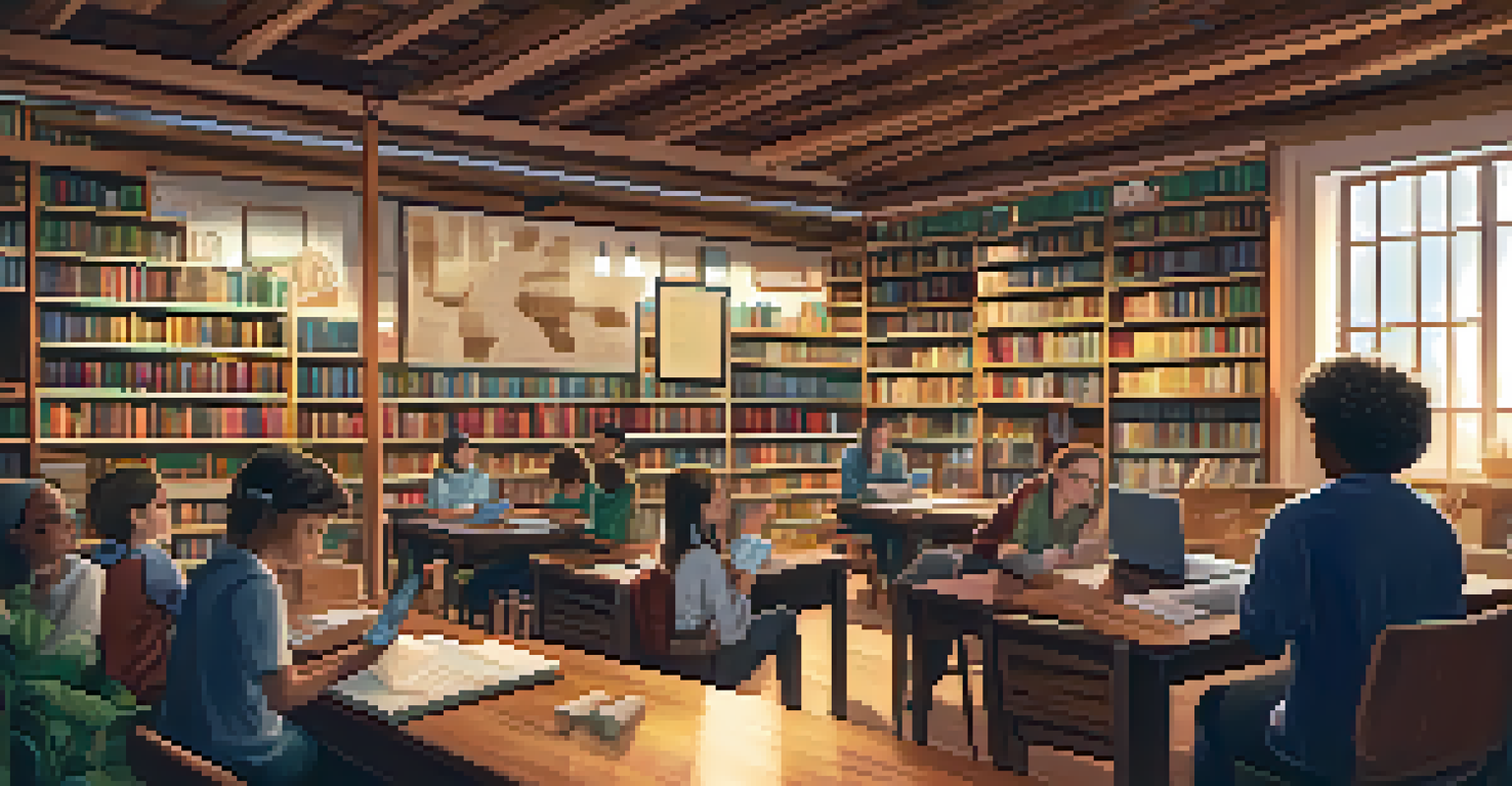Films as Tools for Empathy Development in Education

Understanding Empathy and Its Importance in Education
Empathy is the ability to understand and share the feelings of others. In education, fostering empathy can lead to a more inclusive and supportive environment. Students who develop empathy are often better at collaborating and resolving conflicts, skills that are invaluable in their personal and professional lives.
Empathy is about finding echoes of another person in yourself.
By cultivating empathy, educators are not just teaching academic content but also preparing students to be compassionate individuals. This is crucial in today's increasingly diverse world, where understanding different perspectives is key to fostering harmony. Therefore, integrating empathy into the curriculum can significantly enhance the learning experience.
One effective way to nurture empathy in students is through storytelling, and films are a powerful medium for this. Films can transport viewers into different lives and experiences, making them feel a range of emotions that foster a deeper understanding of others.
How Films Can Help Develop Empathy in Students
Films serve as windows into the lives of others, allowing students to experience different cultures, backgrounds, and perspectives. When students watch films that portray diverse characters and narratives, they can better understand the emotions and struggles faced by others. This immersive experience can spark discussions and reflections that deepen their empathetic responses.

For instance, a film about a young refugee's journey can prompt students to consider the challenges of displacement and cultural identity. By engaging with characters’ stories, students might find themselves relating to their struggles, leading to a more profound emotional connection. This connection fosters a sense of compassion and understanding that extends beyond the classroom.
Empathy Enhances Learning Environments
Fostering empathy in education creates more inclusive and supportive classrooms, benefiting both personal and professional student interactions.
Moreover, films can help break down stereotypes and encourage critical thinking. When students analyze the motivations and backgrounds of characters, they learn to question their own biases and assumptions, which is a crucial step in developing empathy.
Selecting Appropriate Films for Educational Settings
Choosing the right films is crucial for effective empathy development. Educators should consider age-appropriateness, the complexity of themes, and the cultural relevance of the film. Selecting films that reflect the experiences of marginalized communities can provide students with insights that they may not encounter in their everyday lives.
The greatest gift of human beings is that we have the power of empathy.
Films like 'The Pursuit of Happyness' or 'Akeelah and the Bee' can inspire discussions about perseverance and overcoming adversity. They offer relatable experiences while also introducing students to broader social issues. The right film can effectively bridge the gap between academic learning and emotional growth.
Additionally, educators can create a safe space for discussion after viewing a film. This allows students to express their thoughts and feelings, reinforcing the empathetic connections they have formed while watching.
Incorporating Film Analysis into Classroom Activities
Film analysis can be an engaging way to deepen students' understanding of empathy. By encouraging students to dissect the characters' motivations, decisions, and consequences, educators can guide them to reflect on their own beliefs and actions. This analytical approach fosters critical thinking skills while reinforcing the emotional lessons embedded in the film.
For example, students might explore how a character's background influences their choices and relationships. Such discussions can lead to rich conversations about privilege, injustice, and the importance of understanding others. By examining these elements, students can cultivate a more nuanced view of the world around them.
Films as Tools for Empathy Development
Films provide immersive experiences that enable students to understand diverse perspectives and emotions, facilitating deeper empathetic connections.
Activities like role-playing or creative writing based on the film's characters can also enhance the learning experience. These methods encourage students to step into someone else’s shoes, reinforcing the empathetic lessons learned through the film.
Creating a Safe Space for Discussion and Reflection
Creating a safe environment for students to share their thoughts and feelings about films is essential. This includes establishing ground rules for respectful communication and ensuring that all voices are heard. When students feel safe to express their emotions, they are more likely to engage deeply with the material and connect with their peers.
Educators can facilitate discussions by asking open-ended questions that invite personal reflections. For instance, questions like 'How did this film make you feel?' or 'What did you learn about others from this story?' can help students articulate their thoughts and feelings. Such prompts can lead to more profound insights and connections.
Additionally, incorporating reflective activities, such as journaling or group discussions, can help students process their emotions and thoughts further. This reflection solidifies their learning and encourages ongoing empathy development.
The Role of Documentaries in Fostering Empathy
Documentaries offer a unique perspective by presenting real-life stories and experiences. They can be particularly effective in fostering empathy as they often focus on social issues, personal struggles, and cultural narratives. By showcasing authentic voices, documentaries can challenge preconceived notions and invite viewers to engage with complex realities.
For example, a documentary about climate change can highlight the experiences of communities directly affected by environmental changes. This type of storytelling can evoke strong emotional responses and encourage students to consider their role in creating change. Engaging with real stories can make the lessons learned from films even more impactful.
Safe Spaces Foster Open Discussions
Creating a safe environment for students to express their thoughts and feelings encourages meaningful discussions that enhance empathy.
Incorporating documentaries into the curriculum can also inspire students to become advocates for social change. By understanding the struggles faced by others, they may feel motivated to take action, whether through community service or activism.
Measuring the Impact of Films on Empathy Development
To understand the effectiveness of films in fostering empathy, educators can implement assessments that measure changes in students' attitudes and behaviors. Surveys or reflective essays can provide insights into how students' perceptions have shifted after engaging with specific films. This feedback is crucial for refining teaching strategies and selecting appropriate films in the future.
Additionally, educators can observe changes in classroom dynamics and interactions among students. A noticeable increase in empathy might manifest as improved collaboration, reduced bullying, or more respectful discussions. These changes can serve as indicators of the positive impact films have on students' emotional development.

Ultimately, measuring the impact of films on empathy is about creating a culture of reflection and growth. By continuously evaluating and discussing these experiences, educators can ensure that empathy remains a core component of the learning journey.